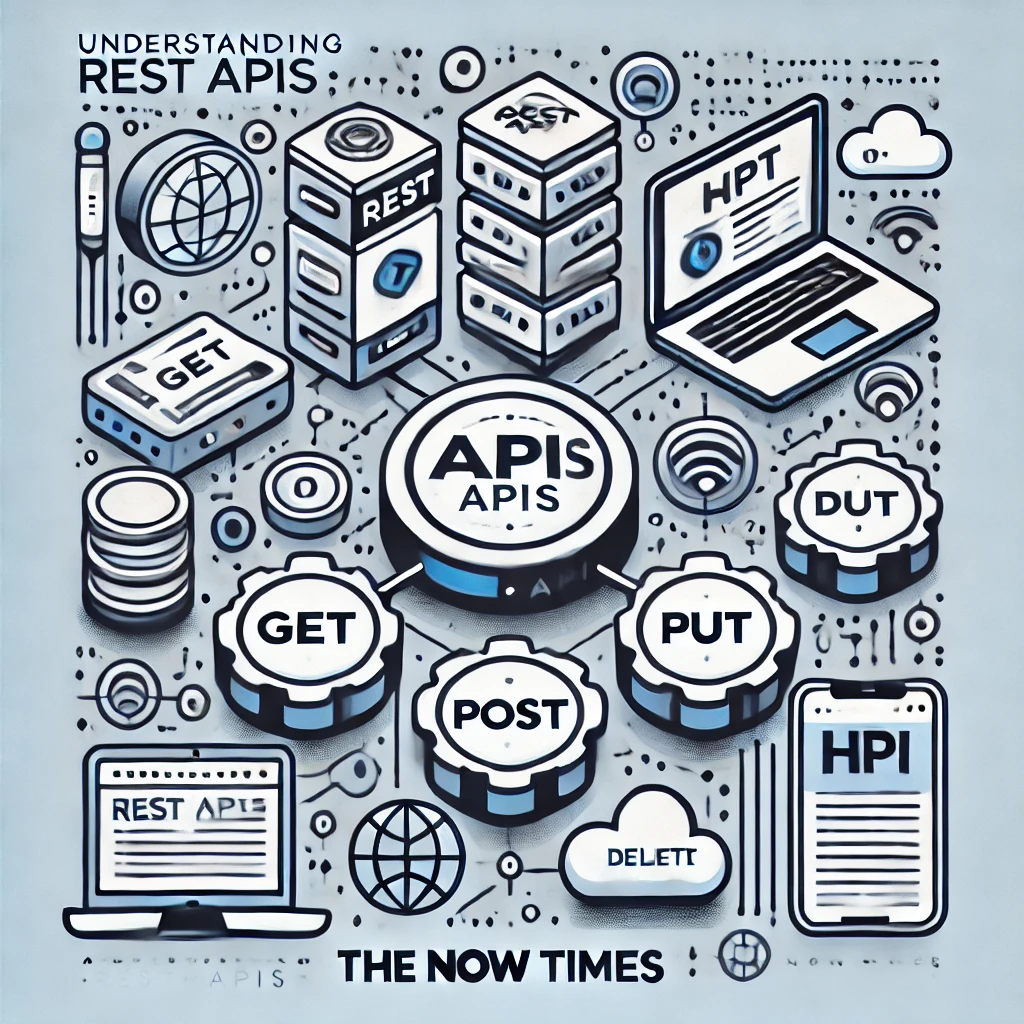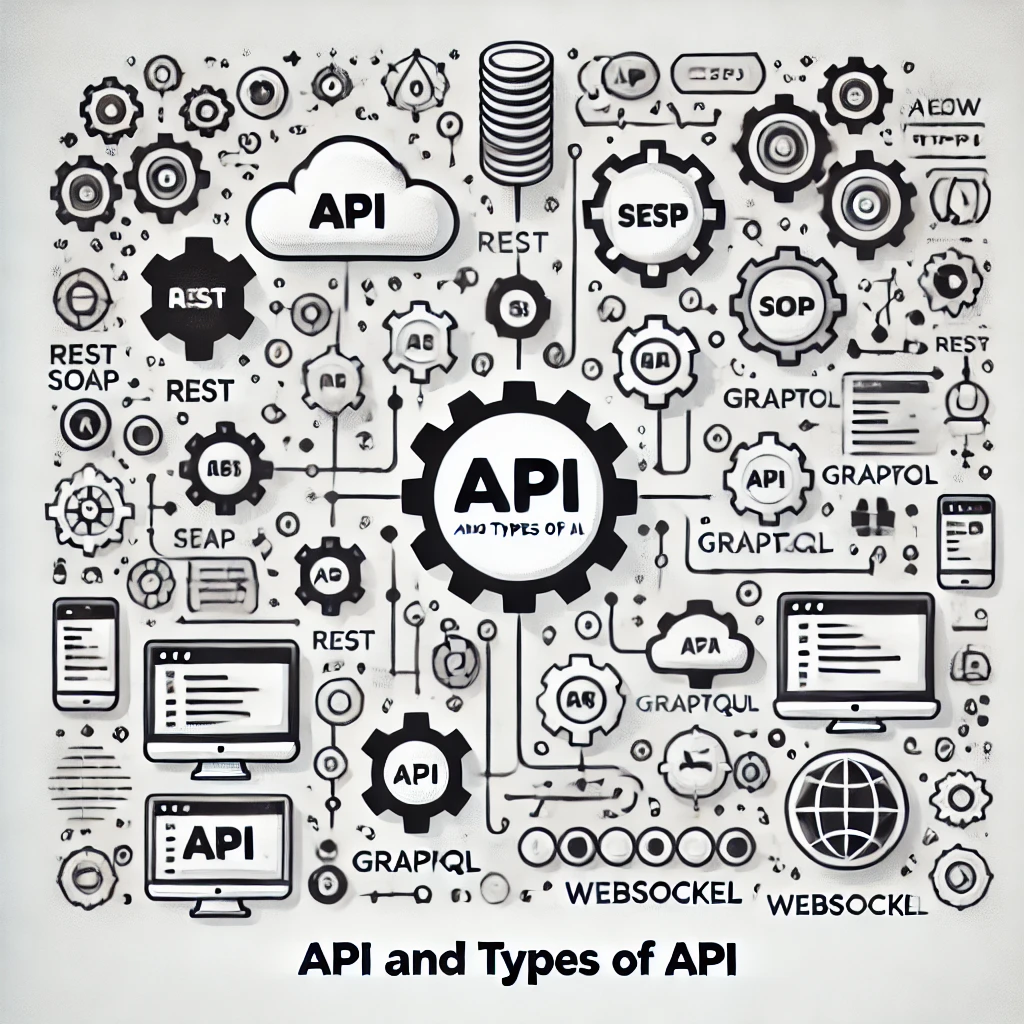Understanding REST APIs: A Continuation of API and Their Types
REST APIs have revolutionized the way systems communicate over the web. Their simplicity, scalability, and compatibility with standard web protocols m

Introduction
APIs (Application Programming Interfaces) act as the bridge between different software applications, enabling them to communicate and exchange data seamlessly. Among the various types of APIs discussed earlier, Understanding APIs and Their Types REST APIs (Representational State Transfer) have emerged as the most widely used due to their simplicity, scalability, and efficiency. In this article, we’ll explore REST APIs in depth, their principles, and why they are essential in modern software development.
What are REST APIs?
REST APIs are a type of web API that adhere to the principles of Representational State Transfer, an architectural style defined by Roy Fielding in his doctoral dissertation. REST APIs are designed to work over HTTP (Hypertext Transfer Protocol), allowing systems to interact with each other using standard web protocols.
REST APIs are stateless, meaning each API request from a client contains all the necessary information for the server to process it. This makes REST APIs efficient and easy to scale.
Principles of REST APIs
To be considered RESTful, an API must follow these principles:
-
Statelessness: REST APIs do not store client information between requests. Each request is treated as an independent transaction containing all the necessary details.
-
Client-Server Architecture: REST separates the client (frontend) from the server (backend). The client is responsible for the user interface, while the server handles data storage and logic.
-
Resource-Based: REST APIs treat every piece of data as a resource, identified by a unique URI (Uniform Resource Identifier). For instance, in a REST API for an online store, /products/123 might represent a specific product.
-
Representation of Resources: Resources can be represented in various formats such as JSON (most common), XML, or HTML. JSON is lightweight and widely adopted, making it the preferred format for REST APIs.
-
HTTP Methods: REST APIs rely on HTTP methods to perform actions on resources:
-
GET: Retrieve data from the server.
-
POST: Create a new resource on the server.
-
PUT: Update an existing resource.
-
DELETE: Remove a resource.
-
Cacheable: Responses from REST APIs can be marked as cacheable, allowing clients to store and reuse responses to reduce server load and improve performance.
Advantages of REST APIs
-
Scalability: REST APIs are stateless, making them easy to scale horizontally by adding more servers.
-
Flexibility: REST APIs are not tied to a specific programming language, enabling integration across diverse platforms and technologies.
-
Simplicity: REST APIs use standard HTTP methods, making them intuitive for developers familiar with web development.
-
Wide Adoption: REST APIs are widely used, with strong community support and extensive documentation, making them an industry standard.
Use Cases of REST APIs
-
Social Media Integration: REST APIs allow developers to connect their applications to social media platforms like Facebook, Twitter, and Instagram.
-
E-commerce Platforms: REST APIs enable e-commerce platforms to manage products, process payments, and handle user accounts.
-
Cloud Services: Companies like AWS, Google Cloud, and Microsoft Azure use REST APIs to provide cloud computing resources.
-
IoT Applications: Internet of Things (IoT) devices use REST APIs to send and receive data from servers.
Best Practices for Designing REST APIs
-
Use Descriptive URIs: URIs should clearly describe the resource. For example, use /users instead of /getUsers.
-
Implement Proper Error Handling: Use standard HTTP status codes like 200 OK, 404 Not Found, and 500 Internal Server Error to communicate success or failure.
-
Secure Your API: Implement security measures such as HTTPS, authentication, and rate limiting to protect your API from misuse.
-
Provide Documentation: Comprehensive documentation is crucial to help developers understand and integrate your API efficiently.
Conclusion
REST APIs have revolutionized the way systems communicate over the web. Their simplicity, scalability, and compatibility with standard web protocols make them the backbone of modern software applications. Whether you're building a social media app, an e-commerce website, or a cloud-based service, understanding REST APIs is crucial for creating efficient and robust systems.
In the next article, we’ll dive into GraphQL—a modern alternative to REST—and explore its unique features and benefits. Stay tuned!
Leave a Comment
Releted Articles

Python Programming for Beginners: Learn Python from Scratch – Course Review
This course is designed to take beginners from zero to proficiency in Python

Can You Learn Hacking Without Programming Experience? A Complete Guide
While programming is a valuable skill in ethical hacking, it is not a strict requirement for getting started.

WebSocket APIs: Real-Time Communication for Modern Applications
The WebSocket API is a powerful tool for enabling two-way, real-time communication between a client and a server.

Understanding GraphQL APIs
GraphQL APIs provide a powerful alternative to traditional REST APIs, offering more control and flexibility to developers

SOAP APIs (Simple Object Access Protocol)
SOAP APIs are a powerful tool for building web services, especially in enterprise environments where reliability and security are paramount.

Understanding APIs and Their Types
APIs are the building blocks of modern software development, enabling seamless communication between diverse systems.

Introduction to Python: Your Gateway to Programming Success
Python is widely used in various fields, making it an invaluable skill

Mastering Python for Automation and Scripting: A Comprehensive Guide
Python is one of the most versatile and widely-used programming languages in the world,





0 comments
There is no any command yet!